Nature, Science & SkepticismBlue Carbon: A Climate Solution Beneath Our Surfboards?
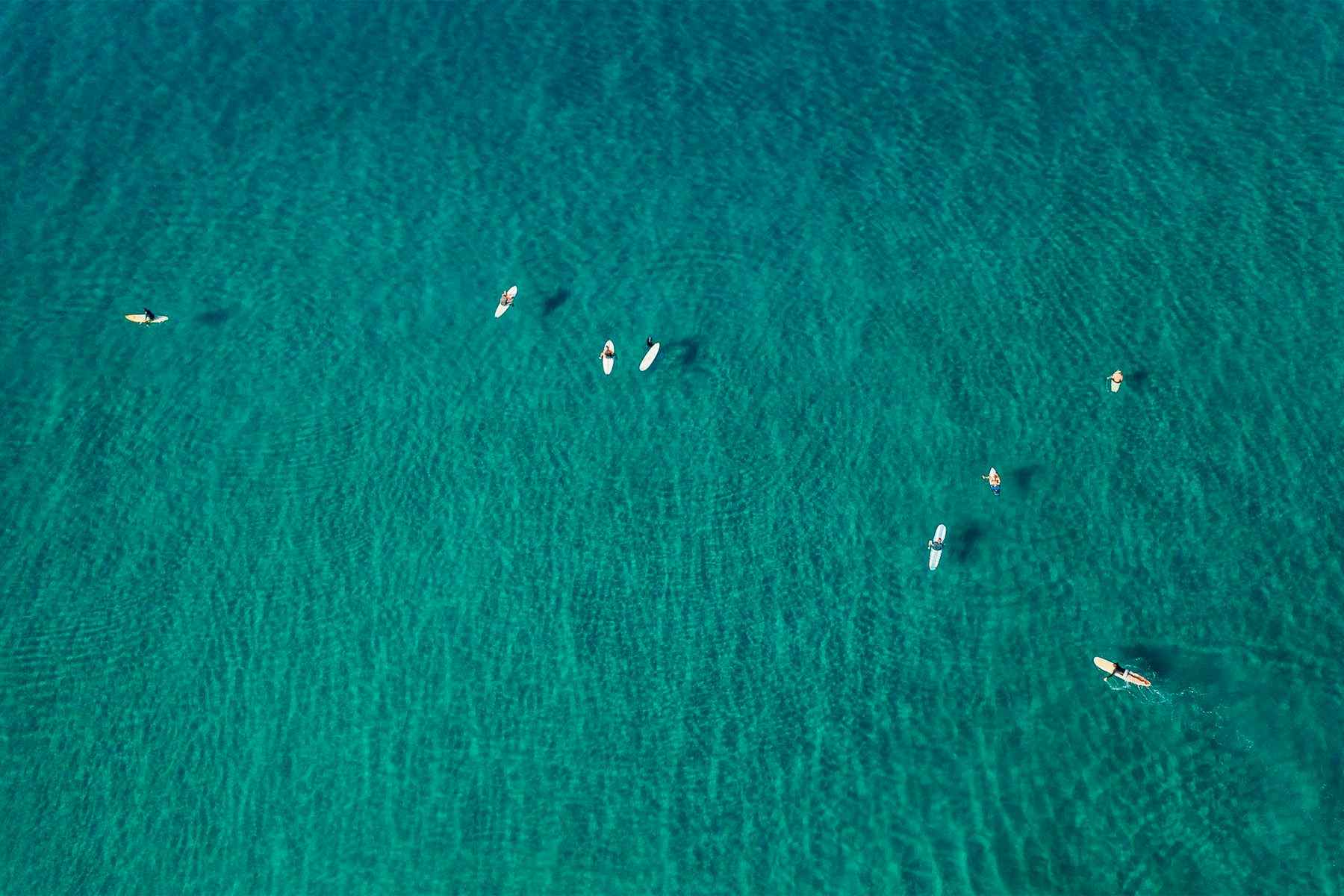
As surfers, most of us play on the front lines of the intensifying climate emergency. Throughout 2023, marked by the arrival of the El Niño climate pattern in June, numerous terrifying new records were set; the hottest year ever recorded was made up of new peaks and above-averages in sea surface temperatures, wildfires, rainfall and other extreme weather events, and record low levels of Antarctic sea ice. It’s not just bad news for those of us whose leisure time hinges on a combination of weather and nature-based factors; it’s bad news for all of humanity and modern civilization, not to mention a multitude of other species.
As societies and governments around the world scramble to deal with and mitigate against the devastating impacts of climate collapse and search for ways to slow this runaway train (some more so than others), could one of our greatest hopes lie in the ocean and coastal environments that we play on the fringes of? Is there a solution beneath our surfboards?
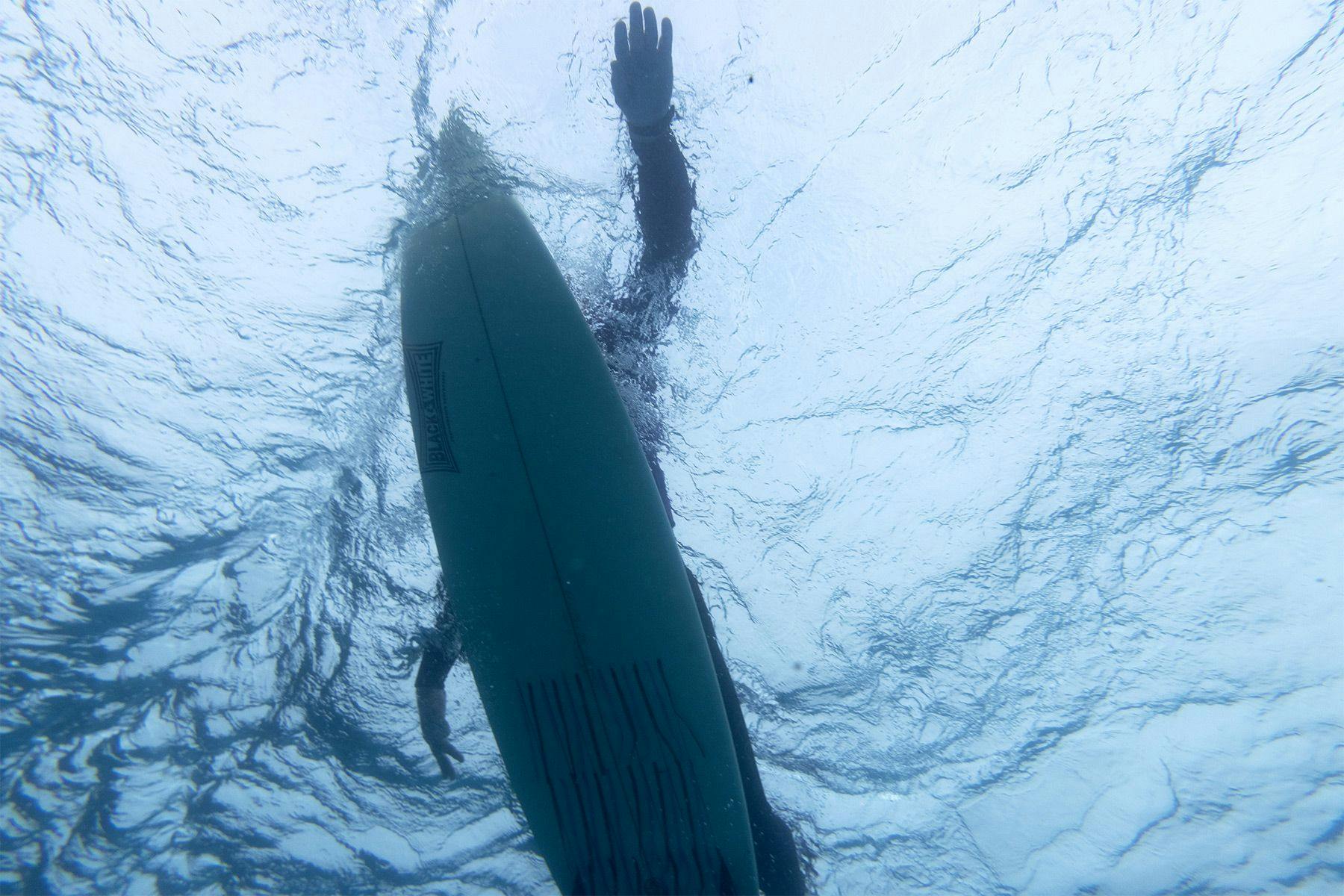
What Is Blue Carbon?
Blue Carbon refers to the carbon dioxide that is drawn-down (sequestered) from the atmosphere by marine flora and fauna, and stored away as carbon in biomass and sediments in marine and coastal ecosystems – primarily in coastal soils and sediments, and algal forests (seaweeds, in particular kelp). Compared to terrestrial ecosystems blue carbon ecosystems are both faster and more efficient, potentially sequestering carbon dioxide from the atmosphere at rates of at least four times (according to the UN) but perhaps between ten to fifty times higher than terrestrial forests can (per unit area per year) (Mcleod et al.,2011) and locking it away for longer.
“Blue carbon ecosystems bury a comparable amount of carbon annually, despite occupying less than 3% of global forest area.”
Duarte et al., 2013
Blue carbon ecosystems also offer significant additional benefits in the form of enhanced biodiversity, coastal (storm and flood) protection, as nursery grounds for fish (with positive impacts for commercial fisheries and food security), and improving water quality.
Because it is still a relatively new field of scientific research with gaps in evidence and quantification, The United Nations Framework Committee on Climate Change define blue carbon habitats only as mangroves, saltmarsh and seagrass. All of which are in severe decline. Other blue carbon mechanisms and stores, such as macroalgae (kelp and other seaweeds), corals, seabed sediments and the deep ocean, have huge potential however there is not yet enough robust research and data for them to be included in international climate policies.
"The most crucial, climate-combating coastal ecosystems cover less than 0.5% of the sea bed. But they are disappearing faster than anything on land and much may be lost in a couple of decades. These areas, covering features such as mangroves, salt marshes and seagrasses, are responsible for capturing and storing up to some 70% of the carbon permanently stored in the marine realm."
Achim Steiner, UN Under-Secretary General and Executive Director, UNEP (2006-2016)
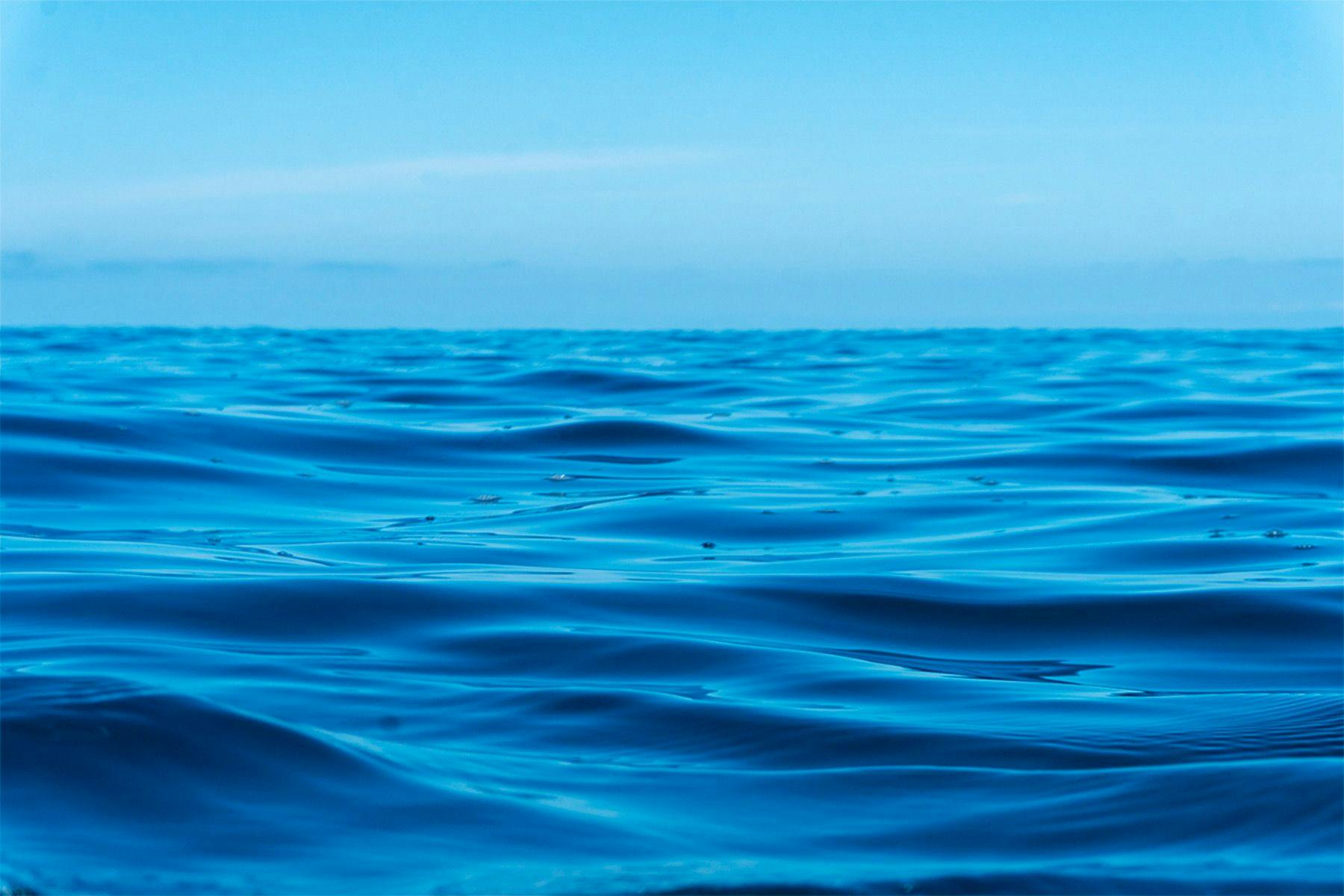
The Bigger Picture – Blue Carbon’s Potential
In 2023 the global mean near-surface temperature was around 1.40 (± 0.12) °C above the 1850–1900 pre-industrial average. The Paris Agreement adopted at the COP21 UN Climate Change Conference in 2015 aims to limit global average temperature to 1.5°C above pre-industrial levels, and to keep it well below 2°C to reduce the risk of exposing life on Earth to exponentially more severe impacts of climate collapse. To have any hope of achieving that, humanity needs to halve annual worldwide CO2 emissions by 2030 and reach Net Zero by 2050.

Since the Industrial Revolution the ocean has absorbed around one third of human-related carbon dioxide emissions, and yet when reacting to the climate and ecological emergency as terrestrial beings much of our focus is on terrestrial solutions. The ocean and its variety of habitats offer no silver bullet – it is estimated that the total CO2e offset potential of blue carbon ecosystems will reach around 0.6 billion tonnes per year by 2030 - single digits as a percentage of mankind’s annual emissions. But as a block they are significant and compared to other opportunities they are faster, more efficient and offer hope.
Blue Carbon Habitats And Surfers
Mangroves, salt marshes and sea grass meadows are not coastal habitats usually associated with surfing. We tend to prefer reefs, rocky headlands, river mouths and beaches. But these “official” blue carbon habitats are often not that far away from our playgrounds – the mangrove forests on the backsides of tropical islands throughout the Indian and Pacific oceans, or the saltmarshes and wetlands behind barrier islands or in the estuaries that we surf at the mouths of. Kelp and seaweed on rocky coasts and reefs, or coral reefs, though? Those are ecosystems that a huge percentage of surfers are intimately familiar with. All are of huge importance and potential when it comes to slowing down climate and ecological breakdown.
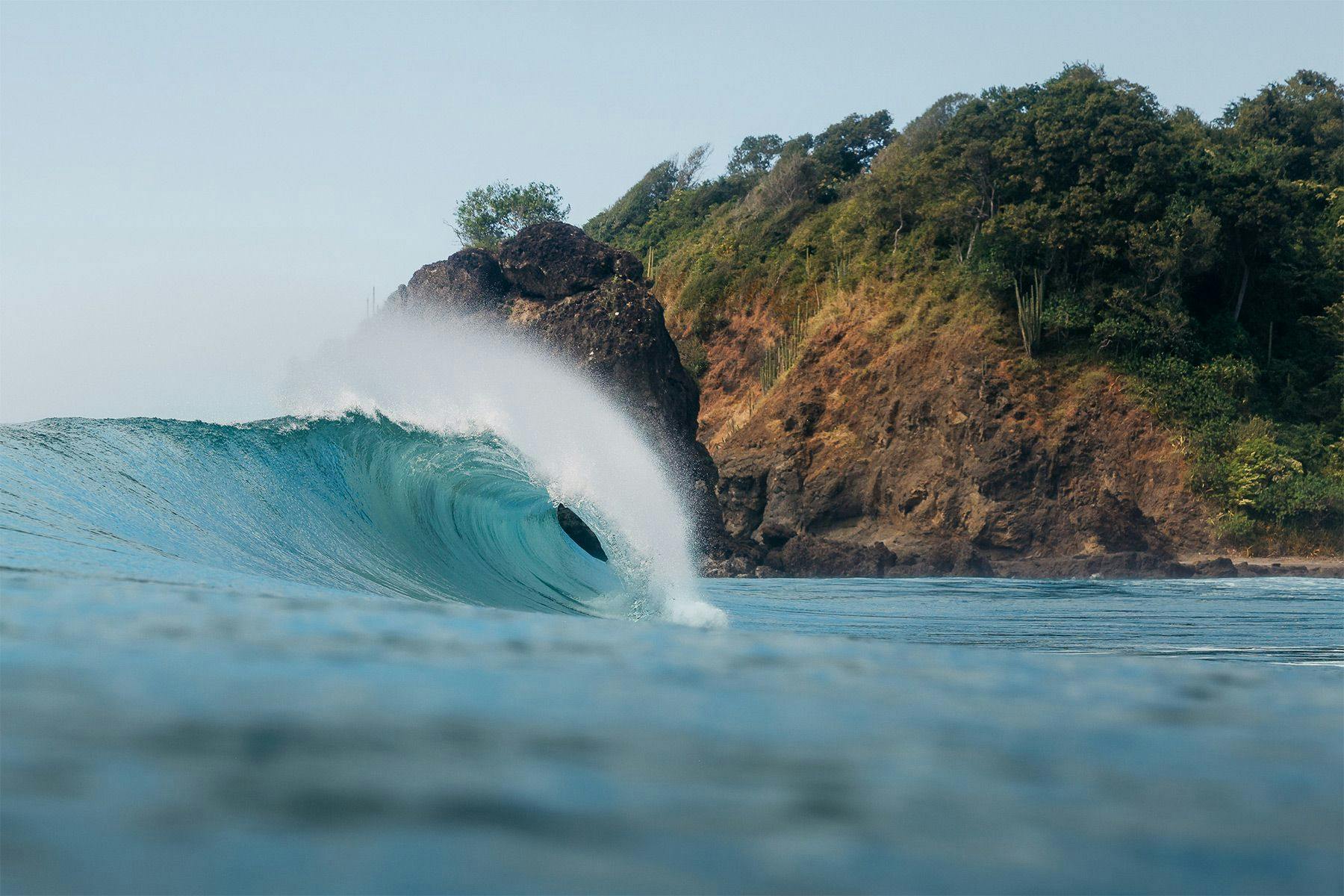
“We can do ourselves a big favour by protecting and restoring all of these coastal ecosystems; by ensuring that the wetlands that we have are protected by planting new wetlands, and by restoring mangroves. That will sequester carbon, buffer our coastal communities from flooding, and provide loads of new habitats. These are the spawning areas for marine life. So it’s a win/win/win. At Surfrider Foundation we’re putting a big emphasis on advocating for and getting projects going to restore the health of our coastlines. These are nature-based solutions that will use the system that’s been around for three billion years to balance the climate for the benefit of everyone.”
Dr Chad Nelsen, Surfrider Foundation
About Mangroves
Mangroves are forests of salt-tolerant trees that grow on calm tropical coastlines with their roots and lower sections submerged in seawater. They are the most carbon-rich ecosystem in the tropics and contain the highest carbon density of all terrestrial ecosystems, locking away carbon at a rate 2-4 higher than the same unit area of mature tropical forest. That carbon is stored in the deep carbon-rich soils of the seabed (80%) with the remainder in the biomass of the trees and their extensive root systems. Each year the world’s mangrove forests sequester an amount of carbon dioxide equivalent to the emissions of 31 coal-fired power stations (34 million tonnes). Since the 1960s however, more than 30% of mangroves have been destroyed.
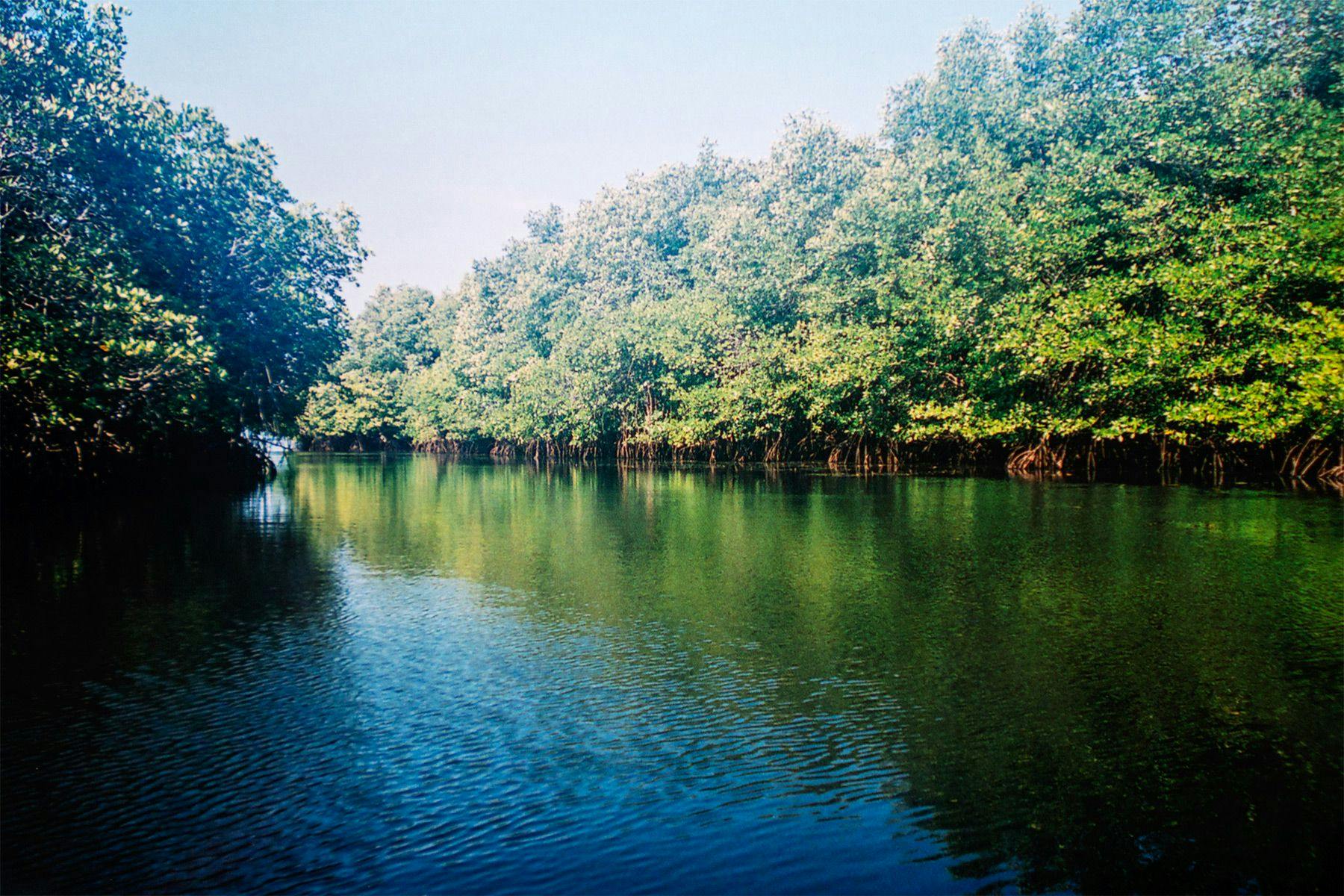
About Salt Marshes
Tidal marshes or salt marshes are most common in temperate latitudes, where they occur in wave-protected areas that are frequently flooded or covered by the tide, such as in estuaries or inlet systems. These ecosystems of low-growing salt-tolerant plants sequester carbon several times faster than tropical rainforests and store it in the soil that can develop to be several meters deep, and keep it locked away for thousands of years. They also play a key role in water filtration, are an important habitat for birds and fishes, and create a natural buffer between the ocean and coastal communities in the event of storms and floods. They are often prime for human exploitation however, such as being drained for conversion to farmland. Since the 1800s, between a quarter and a half of all tidal marsh habitat has been lost, not only removing a valuable carbon sink but also emitting carbon dioxide as the soil is disturbed.
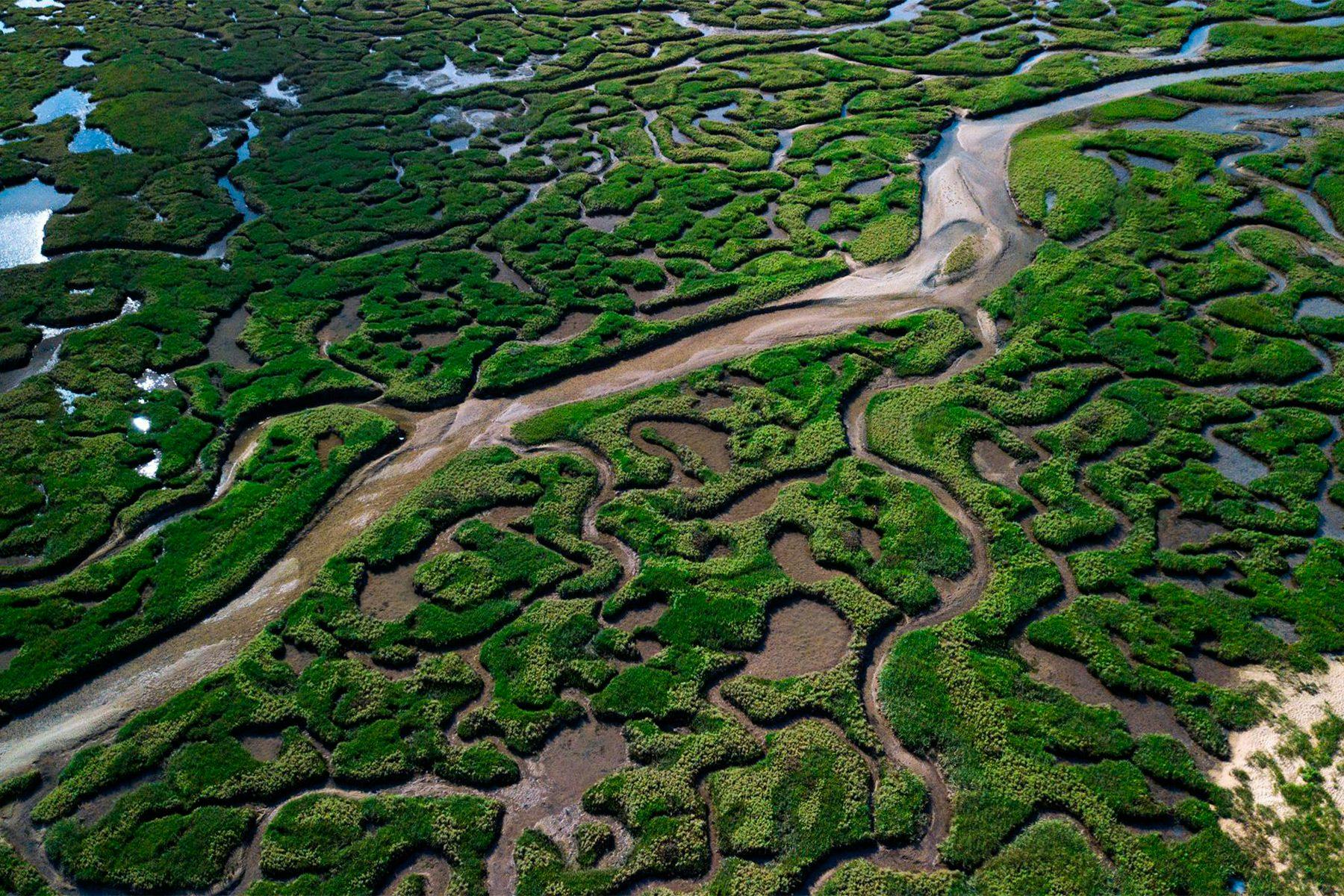
About Seagrass Meadows
Found on every continent with the exception of Antarctica, seagrass meadows (flowering plants that look like grass that grow underwater in shallow, sheltered coastal areas) can absorb carbon up to 35x faster then tropical rainforests, drawing it deep into the seabed where it is stored for millennia. Despite covering only 0.2% of the seabed worldwide and not being as productive carbon sequestration habitats as mangroves and salt marshes, seagrass meadows are estimated to be responsible for 10-20% of the carbon locked away in ocean sediment every year.
Seagrass meadows are incredibly fragile, threatened, and valuable habitats, and around a third have been lost since surveying began in the late 19th century. As with other blue carbon ecosystems, seagrass meadows stabilise the seabed, provide a buffer zone between the ocean and the shore reducing erosion and the severity of coastal flooding, and are an important habitat for juvenile fish.
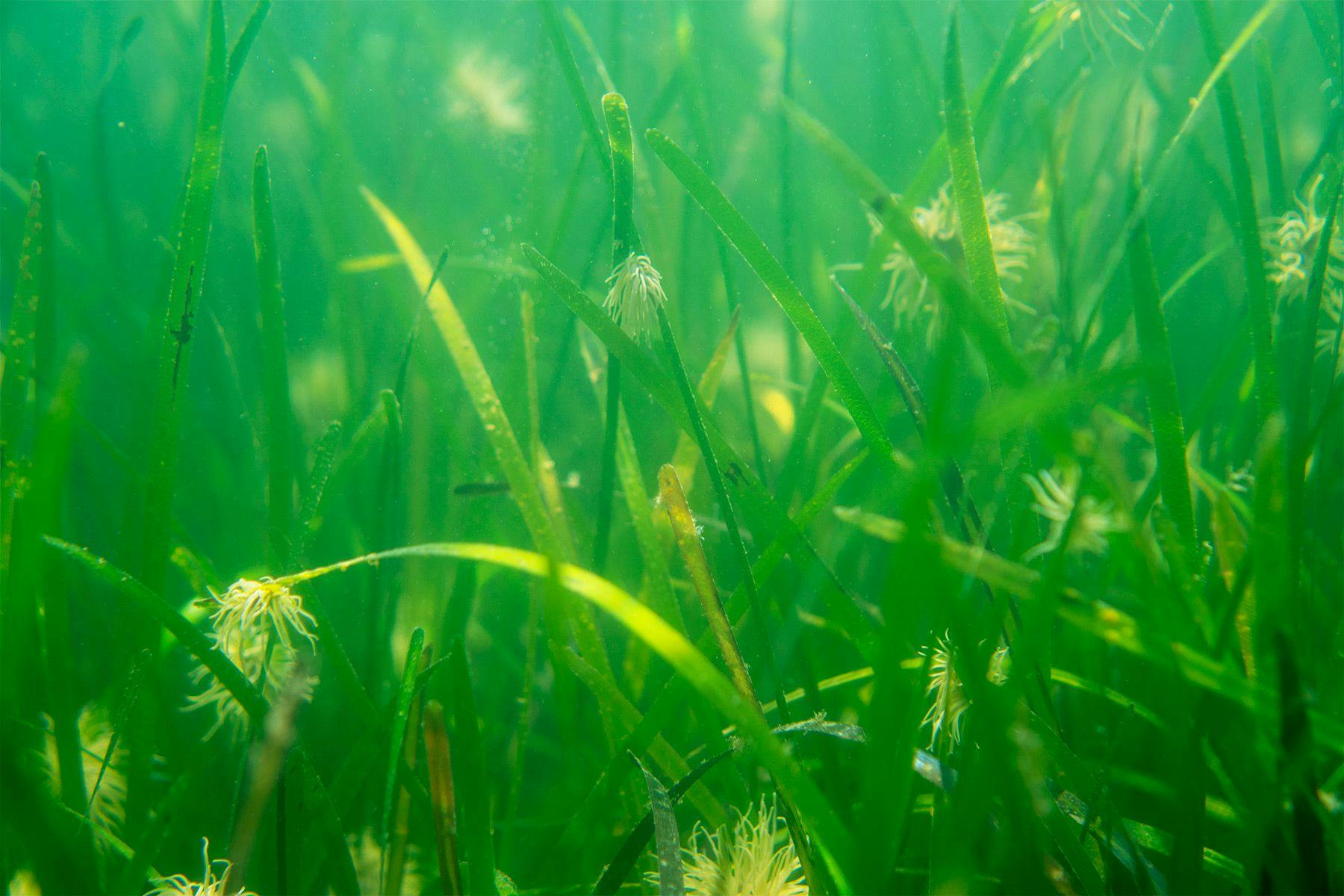
About Macroalgae (Kelp and Seaweeds)
Kelps and seaweeds, the coastal habitats found along more than one quarter of the world’s coastlines that many temperate latitude surfers will be most familiar with, are not yet formally designated as blue carbon ecosystems. Nor are they included in international climate policies because of the way that they store carbon and difficulties in measuring their effectiveness, despite their enormous potential. The difference between macroalgae and the three designated blue carbon ecosystems is that whereas mangrove forests, salt mashes and seagrass meadows lock away most of the carbon they draw down in the sediment and sea bed (measurable), in kelp and seaweeds it is stored in the plant’s biomass until the plant dies (not unlike trees) and can only then be locked away if transported to the deep ocean or absorbed into sediment.
Despite this technicality, kelp is of interest because its phenomenal rates of growth means that it has the potential to draw down huge amounts of CO2 from the atmosphere, fast. In ideal conditions, giant kelp can grow up to 60cm per day, reaching heights of up to 45 meters. This rate of growth is around 30x faster than terrestrial trees and plants.
“When we talk about ways oceans can sequester carbon, the conversation typically revolves around mangroves, salt marshes, and seagrass meadows. But the magnitude of carbon sequestered by algal forests is comparable to that of all those three habitats together,”
Professor Carlos Duarte, King Abdullah University of Science and Technology in Saudi Arabia.
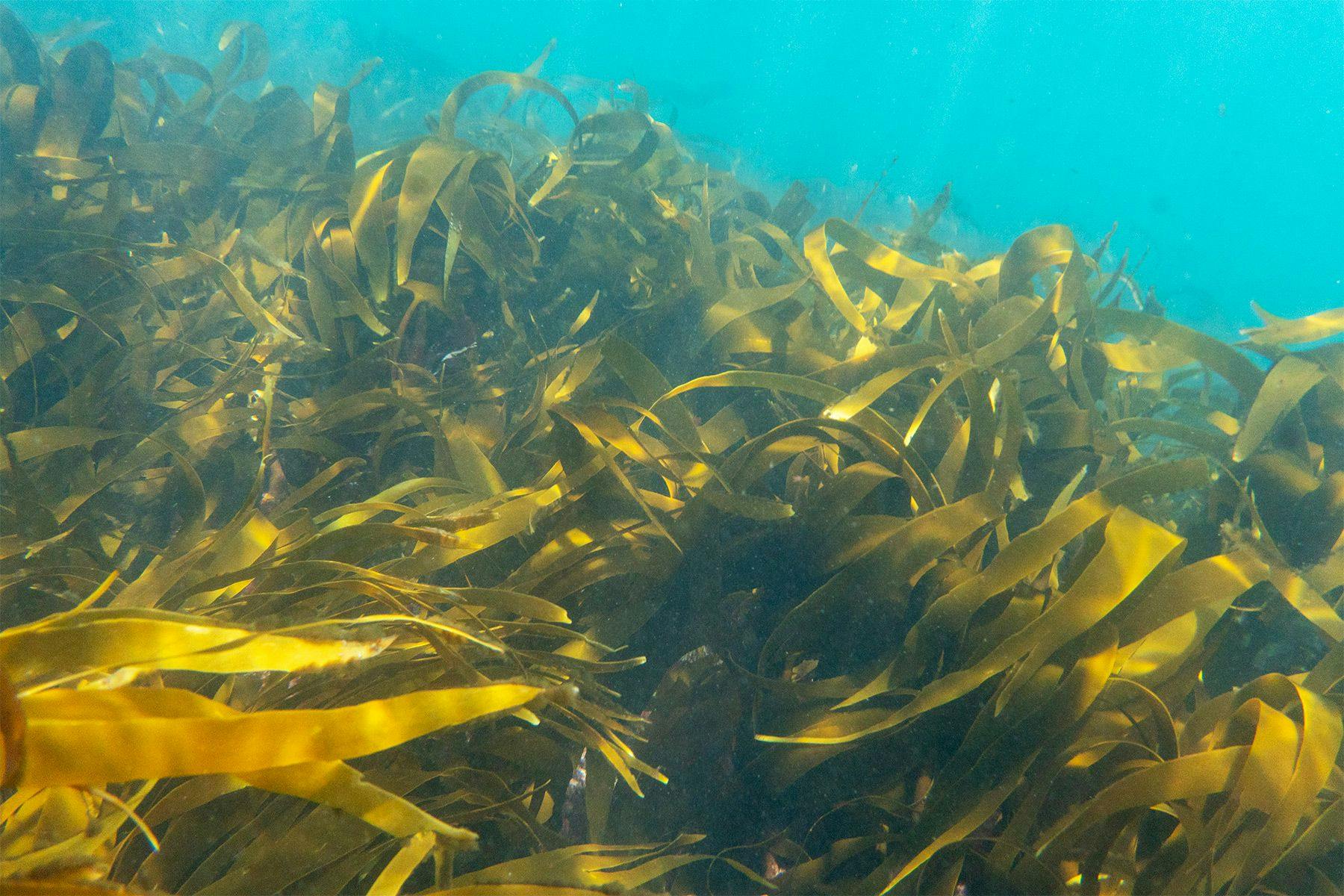
Because kelp and other seaweeds do not grow out of the sea bed and do not have root systems, but instead attach themselves to rocks using “holdfasts”, the carbon contained in the plant’s biomass is not deemed to be as secure. Kelp forests can be ripped up and displaced by storms, and when kelp dies (giant kelp can live for up to seven years, sugar kelp for around 3-4) it can rot and release its stored carbon back into the atmosphere. Potentially, it is only a short-term storage solution, unless the kelp and its stored carbon can be sequestered in the deep sea by sinking below 1km deep, or is absorbed into the seabed. The deep sea acts as a reservoir, storing carbon for several decades as opposed to locking it up for much longer periods or even indefinitely in sediments. At present it is estimated that only around 11% of total kelp and macroalgae biomass enters longer term storage by either making its way to the deep ocean (9.9%) or sinking into marine sediments (1.1%). At present kelp presents a medium term opportunity that is nonetheless challenging to quantify, but with a much greater potential with increased human intervention. Could it provide a “bridging” or cyclical storage service whist more permanent solutions are developed and rolled out?
One study has suggested that if 9% of the ocean’s surface were given over to “Ocean Macroalgal Afforestation” (kelp farms), an area roughly four and a half times the size of Australia, 53 billion tonnes of CO2 would be removed from the atmosphere offsetting all of humanity’s current emissions.
Whilst this may be a moon-shot that is unlikely to transpire, it does a very good job of illustrating the potential impact of macroalgae as a tool for good in the climate crisis.
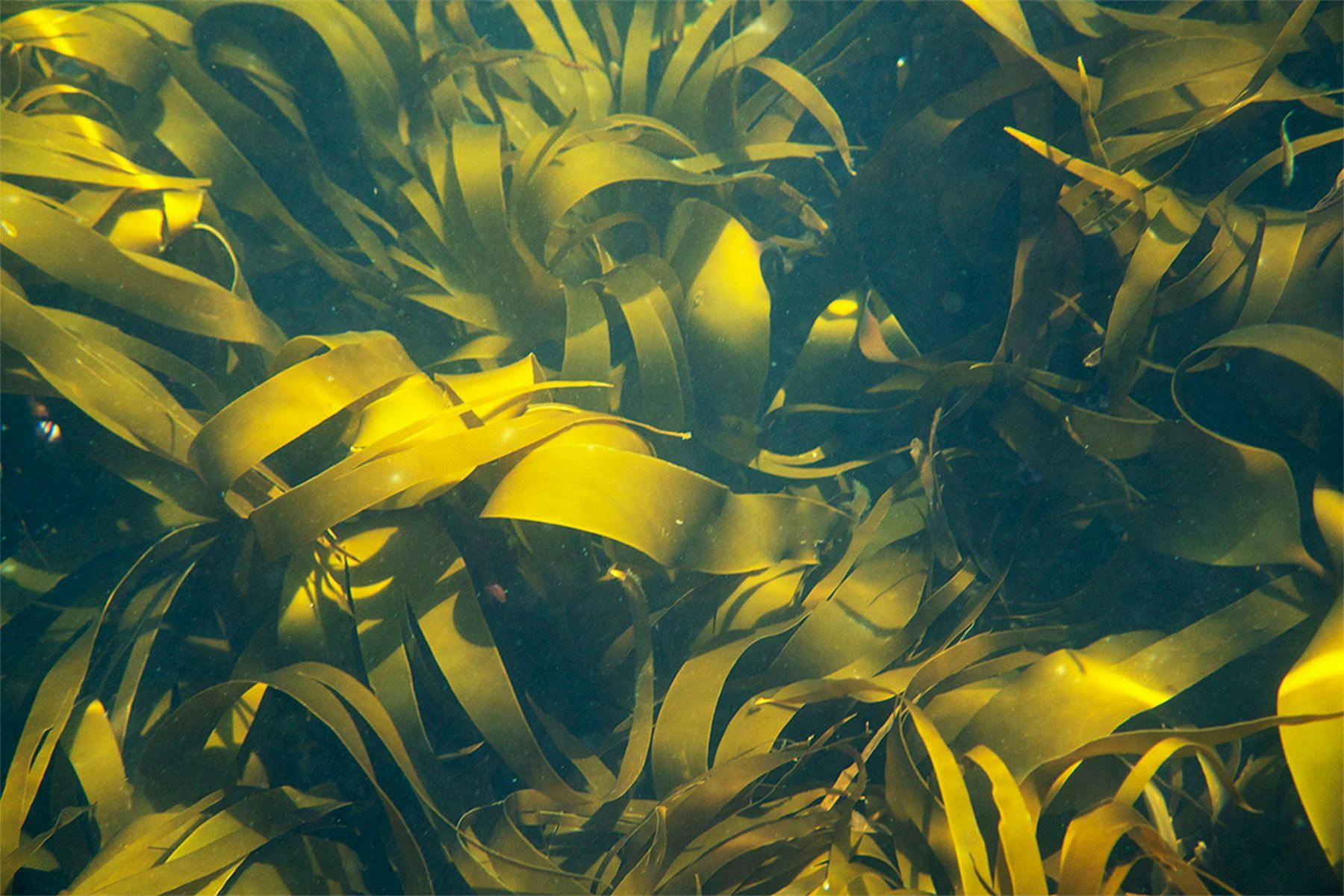
Why Kelp Needs Help
Kelp forests grow in cool, nutrient-rich waters, and are therefore threatened by climate change, warming oceans, and marine heat waves of the sort experienced in 2023. In many regions warmer inshore waters also create preferable conditions for sea urchins which, when combined with a reduction in their natural predators, grow in numbers and feed on kelp roots thus either killing the kelp or breaking it free from its holdfast.
Off the coast of Tasmania, Australia, warming waters caused by the extension of the East Australian current has decimated the island’s giant kelp forests to just 5-10% of their original coverage. In California a reduction in the population of sea otters opened the gate for purple urchins, and in areas like Santa Monica Bay three quarters of the kelp forest has been lost.
Another significant threat to macroalgae (amongst other species and habitats) is commercial fishing, particularly bottom trawling. Bottom trawling ploughs through and tears up kelp and other seaweeds, destroying habitats and also churning up sediment from the seabed that in turn releases the carbon stored there. It is estimated that 55-60% of this carbon dioxide returns to the atmosphere within nine years, and every year bottom trawling releases 1 gigaton of carbon, making its carbon footprint equivalent to that of global air travel.
Whilst a warming climate and ocean (and increased frequency of storms as a result) cannot be addressed on a local level, there are successful initiatives and efforts to protect and restore kelp forests from other threats. In California, divers are clearing urchins by hand and the kelp forest is re-establishing itself; in Sussex on the south coast of the UK, a pioneering marine rewilding project, supported by famed naturalist and broadcaster Sir David Attenborough, succeeded in campaigning for a Nearshore Trawling Byelaw banning the use of bottom-towed trawling gears in a 200 square kilometre area to encourage the restoration of a lost kelp forest; in Tasmania, scientists are propagating surviving kelp plants that are more resilient to the changing conditions and are growing them on ropes rooted to the seafloor in an attempt to regenerate the lost kelp forests. Whilst all of these projects take a different approach to protecting, restoring or eventually expanding kelp forests, they all have the same ultimate aim, and all will add capacity to the ocean’s ability to capture and store – however temporarily – anthropogenic carbon dioxide from the atmosphere.
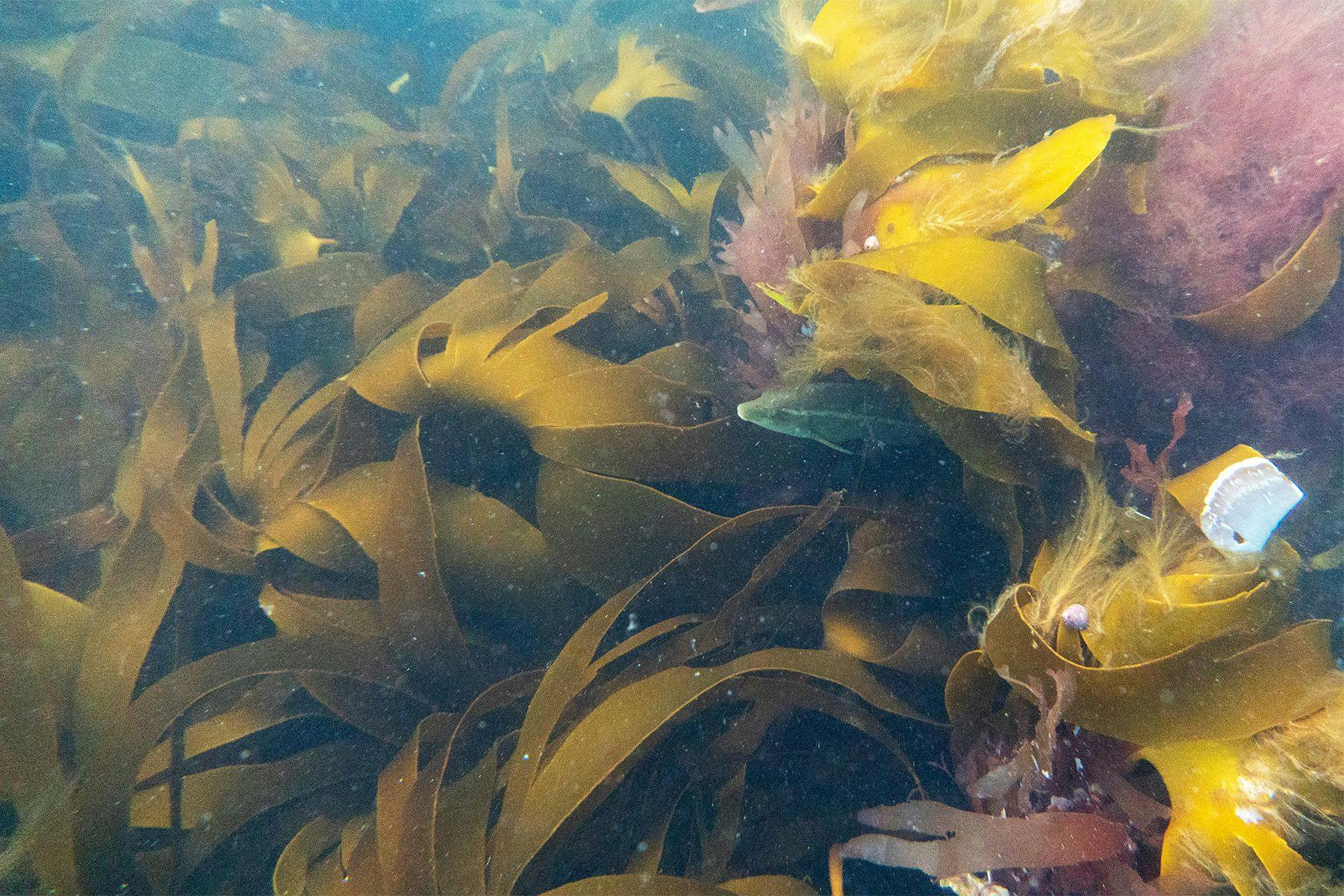
Protecting Blue Carbon Habitats
With such a variety of blue carbon habitats fringing the ocean, there are a variety of ways that they can be protected. These range from large scale projects at a national government level like the establishment and enforcement of Marine Protected Areas or bans on bottom trawling in national waters, down to local and small scale projects focussed on particular habitats, either for conservation or regeneration purposes. All are of huge value, no matter how large or small they are.
Marine Protected Areas are, in the words of the UK Government, “areas of the ocean established to protect habitats, species and processes essential for healthy, functioning marine ecosystems.” The UK boasts 178 MPAs in English waters, covering 51% of inshore and 37% of offshore waters. Some of its overseas territories have made huge commitments such as the islands of Tristan da Cunha in the South Atlantic, where a Marine Protection Zone protects 91% of Tristan’s waters as a no-take (no fishing) zone. Since 2016 The UK Government's Blue Belt Programme has supported the UK Overseas Territories, which are home around 90% of the UK’s biodiversity, to enhance marine protection across more than 4.3 million square kilometres of ocean. This year, three areas around the English mainland will come under the protection of Highly Protected Marine Area designation, which bans activities such as fishing (particularly aimed at bottom trawling), dredging and construction.
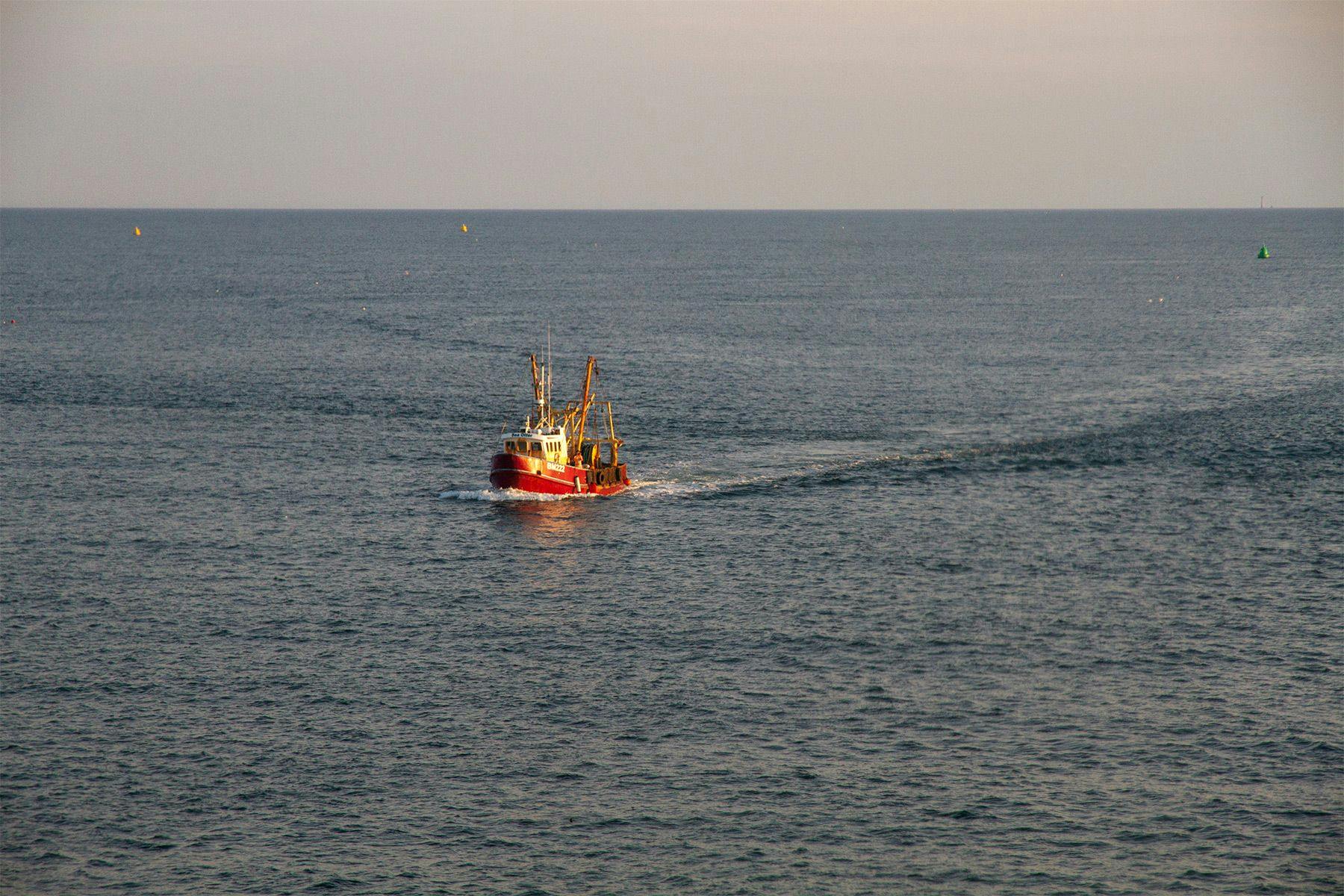
Just before leaving office, President Barak Obama expanded the Papahānaumokuākea Marine National Monument off the coast of Hawaii to encompass more than half a million square miles — making it three times larger than the state of California and the world's largest marine protected area.
The international 30 x 30 initiative aims to protect 30% of the Earth’s surface by 2030, and many participating governments are looking to their territorial waters and Marine Protected Areas to achieve this goal. Marine Protected Areas are however sometimes accused of being “paper parks” that aren’t monitored or enforced properly and therefore don’t afford the habitats and species within them the protection that they claim. Nonetheless, they are a statement of intent and a strong starting point for conservation on a grand scale.
When it comes to conserving and regenerating specific blue carbon habitats, efforts include widespread planting of mangroves, projects to propagate sea grass in nurseries and then plant them out to expand existing meadows, or good news stories of divers in California removing purple sea urchins to allow kelp forests to regenerate.
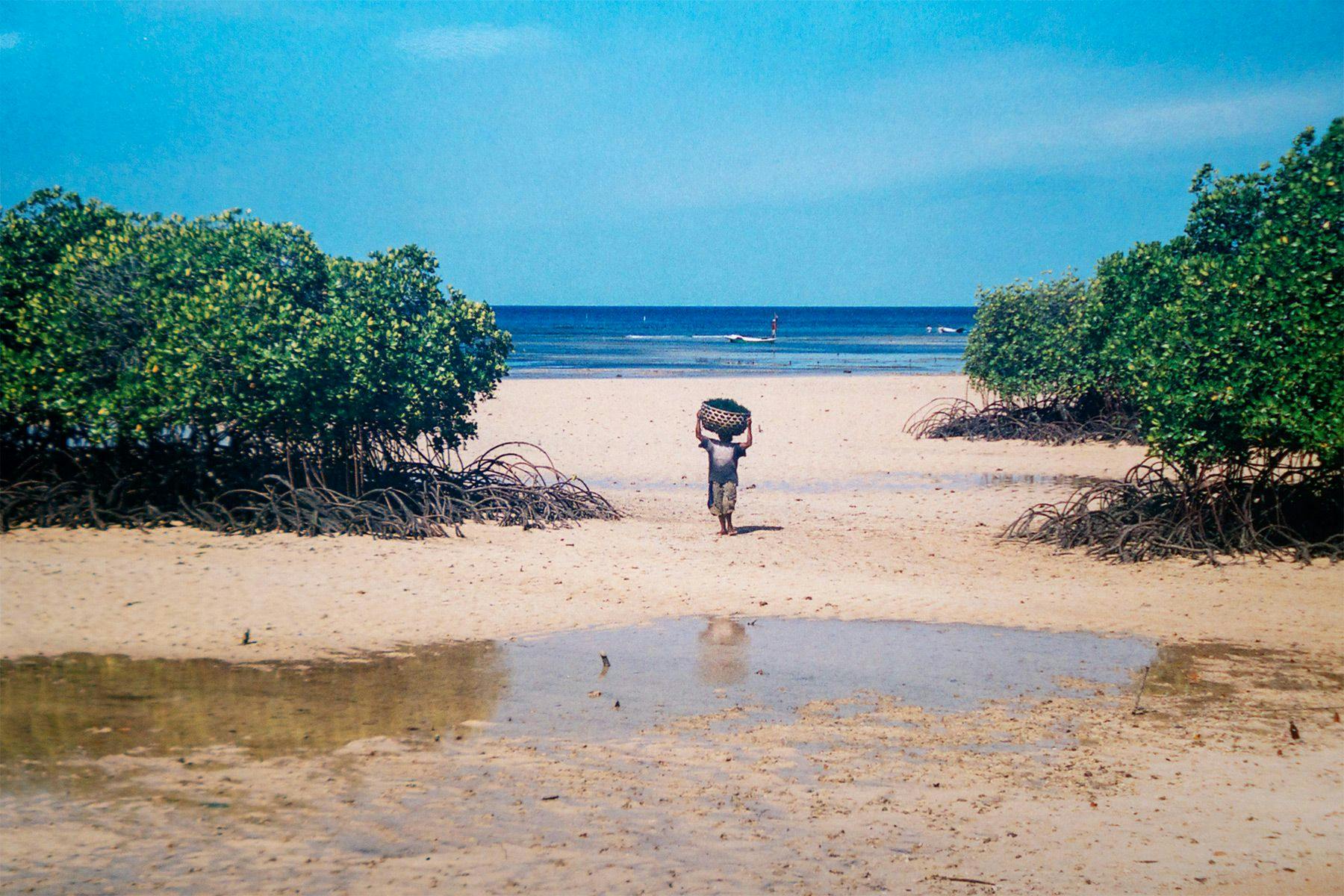
In the last three decades, Pakistan has almost tripled the area covered by mangroves on its coastline thanks to huge mangrove planting schemes, conservation and community engagement. Mangrove afforestation is one of the blue carbon habitats that can currently benefit from investment through voluntary global carbon markets (more on those later), with organisations or individuals investing “per tree” to offset their carbon emissions as they do with terrestrial projects.
“As surfers, we are not just riders of the waves; we are stewards of the sea. Our connection to the ocean runs deep, and with that comes a responsibility to protect and restore the blue carbon coastal ecosystems that shape our favorite surf breaks. From kelp forests to coral reefs, these ecosystems are the unsung heroes of our ocean playgrounds. By actively engaging in global planting and restoration initiatives, we as surfers have the power to be frontline advocates for the health of these critical marine ecosystems. Every wave we catch is a reminder of the delicate balance that exists, and it's our duty to drive awareness, inspire action, and actively engage in projects that preserve the health of our coastlines. Surfers, with our unique bond to the sea, possess the power to make every ride contribute to the greater health of our Ocean Planet. After all - no reef, no wave.”
Michael Stewart, Sustainable Surf
The Potential of Blue Carbon Credits
Marine conservation and protecting the ocean environment at scale is, clearly, of paramount importance. At present, this is largely driven by and the domain of environmental charities. The impact of governments becoming more involved as a result of blue carbon habitats being included in their national carbon budgets and greenhouse gas inventories (therefore counting towards their efforts to reduce their nation’s carbon footprint towards Net Zero to meet their Paris Agreement obligations) could eclipse current efforts. Likewise, if businesses had the option to invest in blue carbon as a mechanism to mitigate (offset) their unavoidable carbon emissions, then there is potential for enormous investment and an acceleration and expansion of blue carbon conservation programmes.
At present, when a company (or individual) wishes to mitigate their carbon footprint (ideally, the last step after all avoidable emissions they are responsible for have been negated first) they pay for carbon offsetting. This involves purchasing a carbon credit for every metric tonne of CO2e emitted that funds the reduction, removal or avoidance of the same volume elsewhere. As such, carbon credits are traded in voluntary global carbon markets (VCM). They may represent investment in renewable energy developments, or reforestation projects. The key to the system is that the reductions in emissions related to the investments must be “real, measurable, traceable, permanent, additional and independently verified to globally accepted standards”. The Voluntary Carbon Market is growing rapidly – as of 2022 it was valued at around $2 billion and some estimates are that it will be worth $250 billion by 2050. Blue carbon credits make up a tiny percentage of the VCM, but as the market grows it will be one of the sectors ripe for growth to meet the demand. The concept of marine and coastal habitats having a financial value as trade-able carbon credits is relatively new, and there is a need to rapidly develop systems and frameworks for global standardisation and regulation.
“Blue carbon ecosystems are extraordinary and the complex range of values they offer are still hard to fully understand or quantify. Carbon sequestration is just one of them. Whether voluntary markets can genuinely lead to a new level of investment in marine conservation and restoration remains uncertain. The focus should not be on enabling a blue carbon market, but making sure that it works for people (indigenous people and local communities primarily) and marine life.”
Dan Crockett, Blue Marine Foundation
Developing a VCM for the blue carbon sector offers the potential for investment in nature-based projects at a scale that will allow them to meet their potential to reduce the worst impacts of the climate and ecological breakdown that is already baked in to all of our futures.
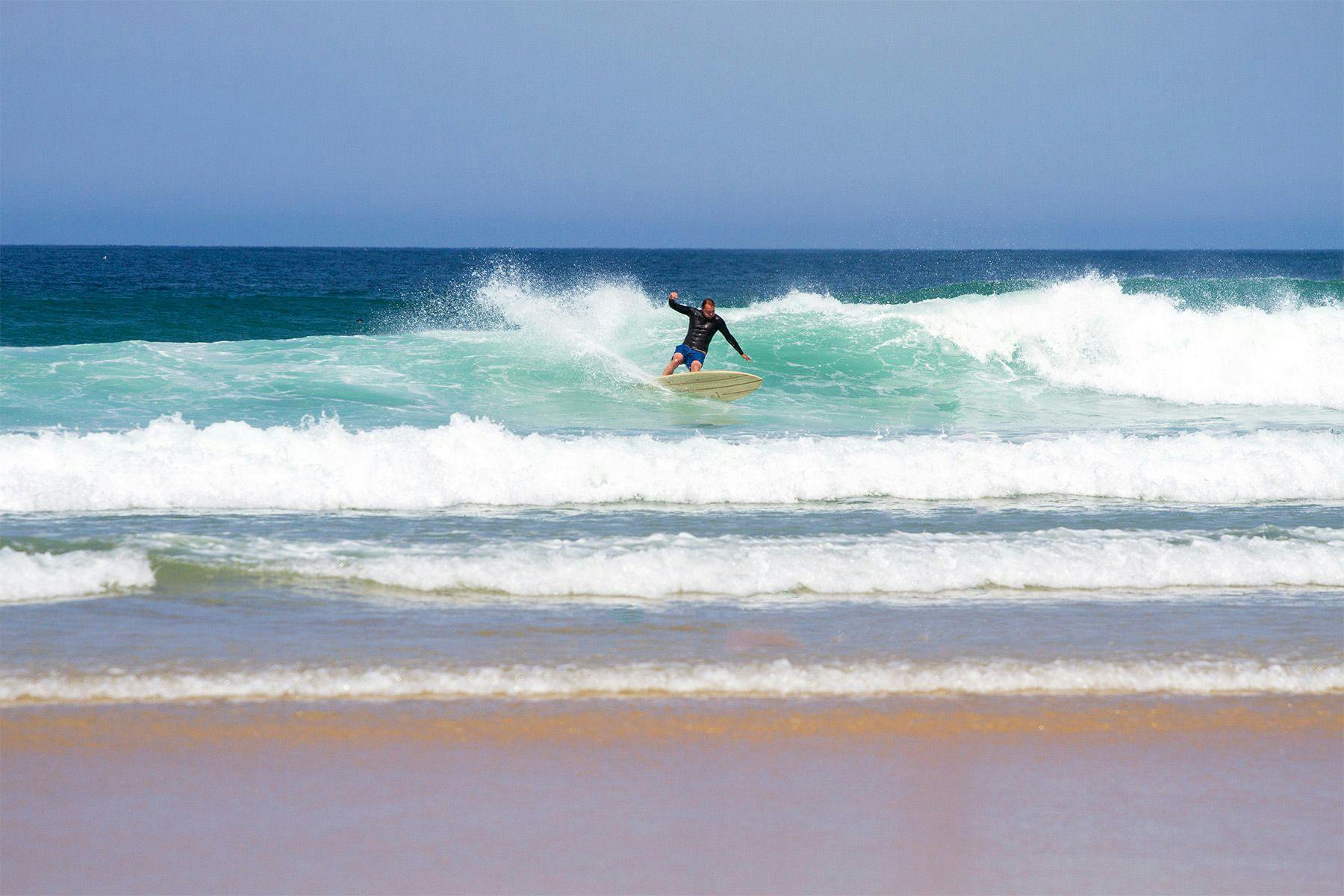
What Surfers Can Do
Some people might accuse surfers of being somewhat self interested; of only acting when something impacts them or their ability to surf directly. In it for a good time, not the greater good, you could say. But surfers can and do act across the entire spectrum of environmental stewardship and activism. Several of the individuals quoted in this article, for example, are committed surfers who work in the top tier of marine environmentalism – perhaps because surfing facilitated in them a love for the ocean environment. Whether you feel compelled to get your boots on the ground (or, more literally, your dive mask on your face) and physically or financially support a blue carbon cause, or by voting with your wallet (not buying and consuming fish that was caught by bottom trawling, or moving your pension away from a provider that still invests in oil and gas exploration that damages coastal and marine habitats) or your actual vote at the ballot box, every action builds on one another and adds weight to the cause of ocean conservation.
“Blue” carbon could just give us cause for hope as the climate and ecological crisis worsens. As surfers, we know more than most of the magnitude, power and wonder of the sea. If we could just give it a fighting chance, we might just do the same for ourselves.